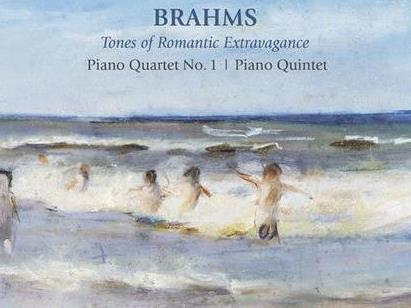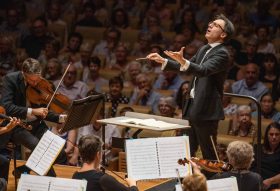Cover art for Ironwood – Brahms – Tones of Romantic Extravagance via the ABC.
It is immensely gratifying that after years of pioneering work by strong and persistent individuals Australia now enjoys a wealth of historically informed performance practice (HIPP) expertise. Over the past years there has been a sea change in pedagogy towards pre-Romantic music; Baroque and Classical ensembles have developed. We can boast a home-grown Baroque opera company and historical performance practice is taught at most serious music schools. Indeed, two performers on this recording have founding positions in the Historical Performance Unit at the Sydney Conservatorium of Music. All of the artists have had and continue to have important international careers in performance and pedagogy in this area. This marks a significant and radical change in what was considered ‘normal’ music education and established performance practice even thirty years ago when it was rare in this country that any young person studied harpsichord over piano, lute over guitar, recorder over flute or Baroque violin. To learn singing was to study opera, but Verdi not Monteverdi. However, individuals drawn to this glorious sound world were inspired by recordings from the northern hemisphere to study overseas and after establishing careers performing with the best ensembles in Europe and the UK, returned to Australia to perform here. The present fascinating recording documents the burgeoning performance research by Neal Peres Da Costa into the Romantic music of Brahms’ chamber music for piano and strings; he has recently received an ARC grant to pursue this research and we eagerly await developments.
The recording presents Ironwood, an ensemble specialising in mainly Classical and Romantic repertoire, performing two of Johannes Brahms’s most famous chamber works for strings and piano of the late 19th Century, his Piano Quartet No 1 in G minor, Op 25 and the Piano Quintet in F minor, Op 34, and employing formidable expertise and academic research within the ensemble in reassessing how these works may ‘sing’ as intended. There is no doubt that the research breathes new life into both works. I needed to hear the recording several times, however, before coming to terms with it and I warn any Brahms-o-philes that they might have a similar experience. There are many details to address, but here are the
significant innovations in style: portamento in strings (expressive sliding between intervals and intervallic shifts) separation of melody from accompaniment in the piano and chordal appeggiation applied expressively, and the holding up of music ‘elastically’ when it is expressively addressed. The principal innovation, however, is the use of a replica of a Viennese-action grand piano after J.B. Streicher & Sohn (1868) by Paul McNulty similar to an instrument Brahms owned. This is a parallel-strung, wooden-framed instrument with leather hammers (not felt) with distinct register changes through the compass: flute-like in the treble, warm and orchestral in the middle register and brassy in the bass. The above coming all at once and without relief makes for a strange and wonderful listening experience. To my mind the jury is still out on questions of the piano’s weight, resonance and, connected, the use of sustain pedal within the ensemble. The string playing is first-rate throughout with particular mention to be made of Daniel Yeadon’s highly expressive contribution.
So this recording has both fascinated and perturbed me for a while as I try to get used to Ironwood’s radical ‘restoration’ of Brahmsian style. The big question for me is: Is this ‘real’, that is, ‘authentic’, or is it a well-undertaken, speculative historical recreation or interpretation? Nonetheless it is brilliant, questioning and engaging.
Rating: 4 stars out of 5
Ironwood – Brahms – Tones of Romantic Extravagance
Robin Wilson, violin
Rachel Beesley, violin
Nicole Forsyth, viola
Daniel Yeadon, cello
Neal Peres Da Costa, historical pianoforte
ABC Classics 481 4686





